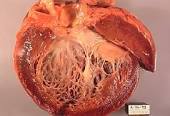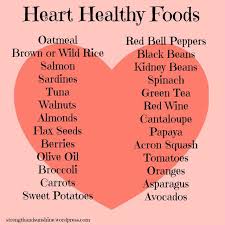
Diagnosed with Cancer? Your two greatest challenges are understanding cancer and understanding possible side effects from chemo and radiation. Knowledge is Power!
Learn about conventional, complementary, and integrative therapies.
Dealing with treatment side effects? Learn about evidence-based therapies to alleviate your symptoms.
Click the orange button to the right to learn more.
- You are here:
- Home »
- Blog »
- side effects ID and prevention »
- Therapy-induced Heart Damage Among Breast Cancer
Therapy-induced Heart Damage Among Breast Cancer

Therapy-induced heart damage among breast cancer survivors is a true long-term and/or late stage side effect according to the study linked below. I say this because only a small fraction of breast cancer patients exhibit heart damage in the days, weeks and months following cardiotoxic chemo and/or radiation.
But according to the study below, that percentage of therapy-induced heart damage among breast cancer survivors increases steadily over the years to more than 15% after 15 years.
I was diagnosed with therapy-induced cardiomyopathy myself 15 years after my own cardiotoxic chemo regimens. My cancer is different from breast cancer however.
Cardiotoxic chemotherapy regimens is the issue here I guess. Not what kind of cancer you have.
Below is a listing of all cardiotoxic chemo regimens for breast cancer patients.
What chemotherapy regimens for breast cancer are cardiotoxic?
- Anthracyclines:
- Doxorubicin (Adriamycin): One of the most well-known cardiotoxic agents. The risk increases with cumulative doses.
- Epirubicin: Similar to doxorubicin but with a slightly lower risk of cardiotoxicity.
- Daunorubicin: Used less frequently in breast cancer but still associated with cardiac risks.
- HER2-targeted therapies:
- Trastuzumab (Herceptin): Frequently used in HER2-positive breast cancer, associated with a risk of reversible cardiotoxicity, especially when combined with anthracyclines.
- Pertuzumab (Perjeta): Often used in combination with trastuzumab, can contribute to cardiotoxicity.
- Ado-trastuzumab emtansine (T-DM1): A conjugate of trastuzumab with a chemotherapy agent, carries a risk of cardiotoxicity.
- Cyclophosphamide:
- When used in combination with anthracyclines, the risk of cardiotoxicity is amplified.
- Taxanes:
- Paclitaxel (Taxol): Generally less cardiotoxic than anthracyclines but can still cause cardiac side effects, especially when used in combination with other cardiotoxic agents.
- Docetaxel (Taxotere): Similar to paclitaxel in its cardiac risk profile.
- 5-Fluorouracil (5-FU) and Capecitabine:
- These drugs can cause coronary artery spasms leading to angina and myocardial infarction, albeit less commonly.
- Targeted Therapies and Small Molecule Inhibitors:
- Lapatinib (Tykerb): An oral HER2 and EGFR inhibitor, can cause cardiotoxicity, though less frequently than trastuzumab.
Key Considerations:
- The risk of cardiotoxicity increases with cumulative doses of these agents, particularly anthracyclines.
- Pre-existing cardiovascular disease or risk factors (such as hypertension, diabetes, and smoking) can increase the risk of cardiotoxicity.
- Monitoring cardiac function (e.g., using echocardiograms or MUGA scans) before, during, and after treatment is crucial for early detection and management of cardiotoxicity.
What I have experienced about cardiotoxicity and the heart damage it causes, regardless of the type of cancer you have, is that damage is done immediately of course. but will continue to exhibit itself in the years that follow.
I have read studies documenting therapy-induced heart damage rearing its ugly head fully 30 years after active treatment.
The solution? The study below ecourages regular echocardiograms. While regular diagnostic testing is important, it is only one of many possible therapies.
As a cancer survivor who lives with therapy-induced cardiomyopathy, I live as heart-healthy a lifestyle as I can which includes:
- the Mediterranean diet (as closely as possible on a daily basis),
- heart healthy nutritional supplements such as CoQ10, Magnesium, Vitamin D, Curcumin, etc.,
- daily, moderate exercise.
- minimal stress, a good night’s sleep, etc.
When I was first diagnosed with therapy-induced cardiomyopathy, I was prescribed metoprolol. I had a reaction to this common heart medication and made the decision to pursue an evidence-based but non-conventional heart healthy lifestyle as possible.
That decision was in early 2016. My EF increased, my BP moderated, I live with chronic Atrial Fibrillation- in short, I manage my chemotherapy-induced cardiomyopathy without the use of any conventional therapies.
If y9u would like to learn more about therapy-induced heart damage among breast cancer survivors and possible therapies- both conventional and non-conventional, email me at David.PeopleBeatingCancer@gmail.com
Hang in there,
David Emerson
- Cancer Survivor
- Cancer Coach
- Director PeopleBeatingCancer
Cardiac Dysfunction Among Breast Cancer Survivors: Role of Cardiotoxic Therapy and Cardiovascular Risk Factors
“In a study reported in the Journal of Clinical Oncology, Bostany et al found that the cumulative incidence of cardiac dysfunction reached 15.3% at 15 years from the start of cardiotoxic treatments in breast cancer survivors…
Key Findings
A total of 2,808 echocardiograms in 829 breast cancer survivors were assessed. Median age at breast cancer diagnosis was 54.2 years (range = 20.3–86.3 years). Median follow-up was 8.6 years (range = 1.8–39.8 years).
Cardiotoxic therapy consisted of
- anthracyclines in 39.7% of patients,
- trastuzumab/pertuzumab in 16%,
- both anthracyclines and trastuzumab/pertuzumab in 6.2%,
- and radiation therapy alone in 38.1%.
The cumulative incidence of cardiac dysfunction increased from 1.8% at 2 years to 15.3% at 15 years from the start of cardiotoxic therapy. Longitudinal analysis among all patients showed an annual decline of 0.29% in LVEF (P = .009) over 20 years from breast cancer diagnosis.
On multivariate analysis, factors associated with a significantly increased risk of cardiac dysfunction included Black race (hazard ratio [HR] = 2.15, 95% confidence interval [CI] = 1.37–3.38); receipt of cardiotoxic therapies including anthracyclines (HR = 2.35, 95% CI = 1.25–4.4) and anthracyclines and trastuzumab/pertuzumab (HR = 3.92, 95% CI = 1.74–8.85) vs left breast radiation alone; receipt of selective estrogen receptor modulators (HR = 2.0, 95% CI = 1.2–3.33); and history of hypertension prior to cancer diagnosis (HR = 3.16, 95% CI = 1.63–6.1).
Late-onset cardiac dysfunction was most common among patients exposed to anthracyclines and radiation therapy, and early-onset dysfunction was more common among patients exposed to anthracyclines and trastuzumab/pertuzumab.
The investigators concluded, “These findings provide evidence to support echocardiographic surveillance for several years after cardiotoxic therapy and also suggest a need to examine the efficacy of management of cardiovascular risk factors to mitigate risk.”

